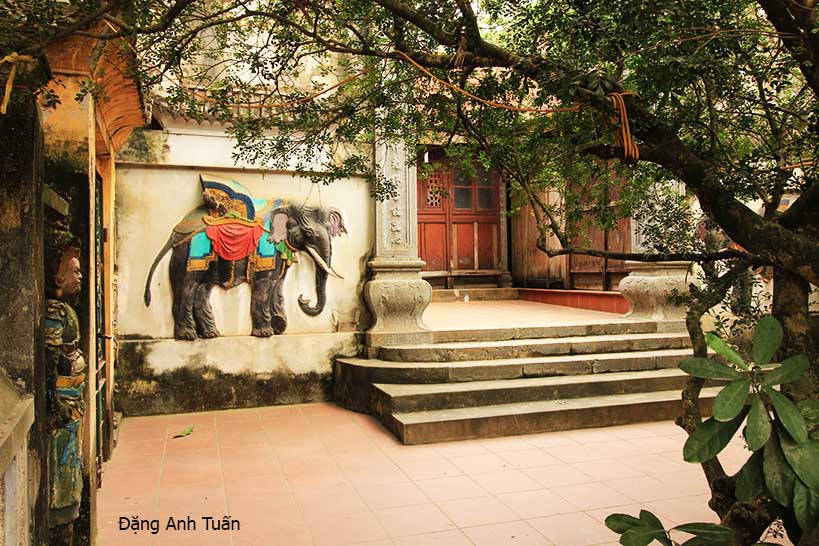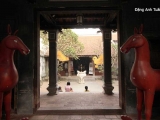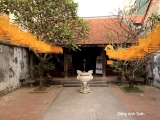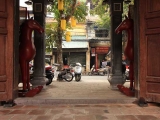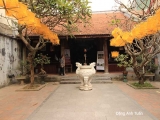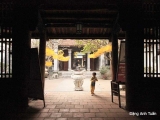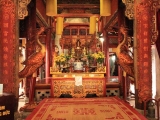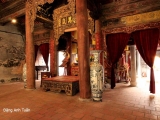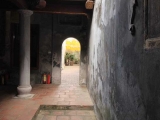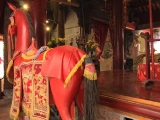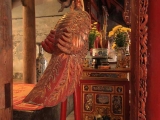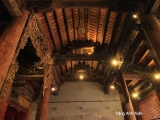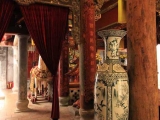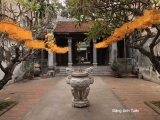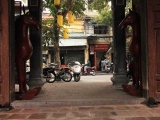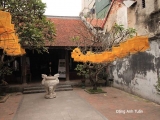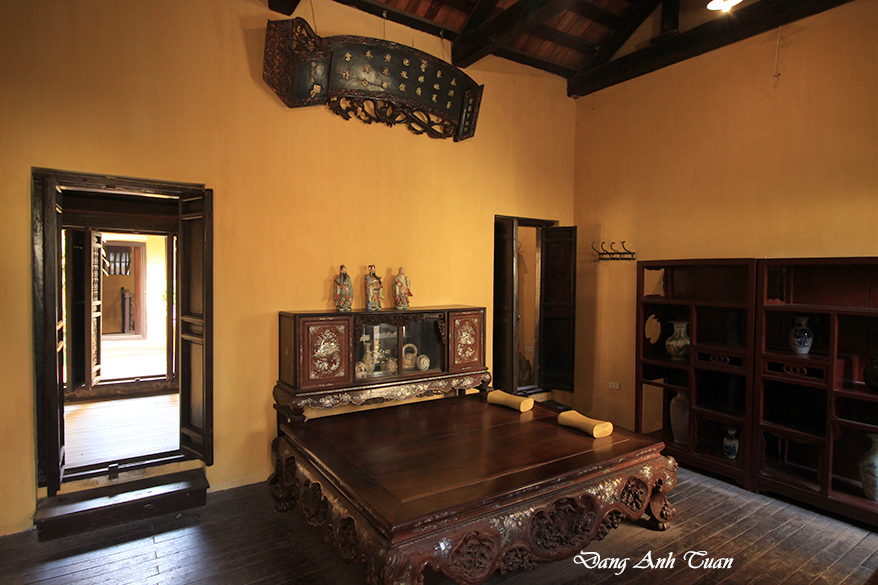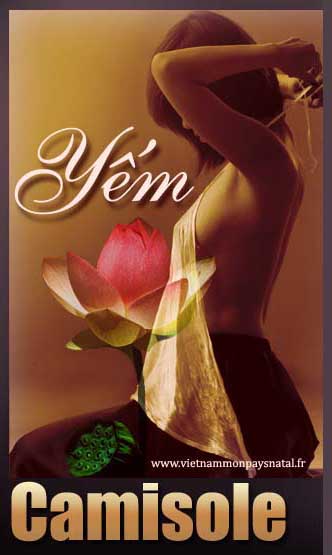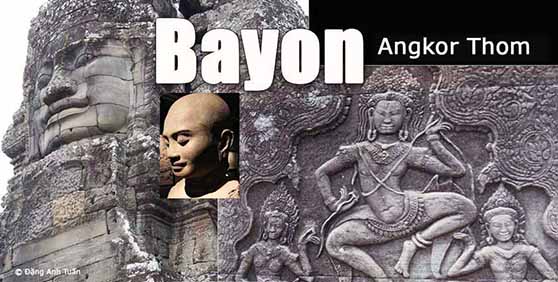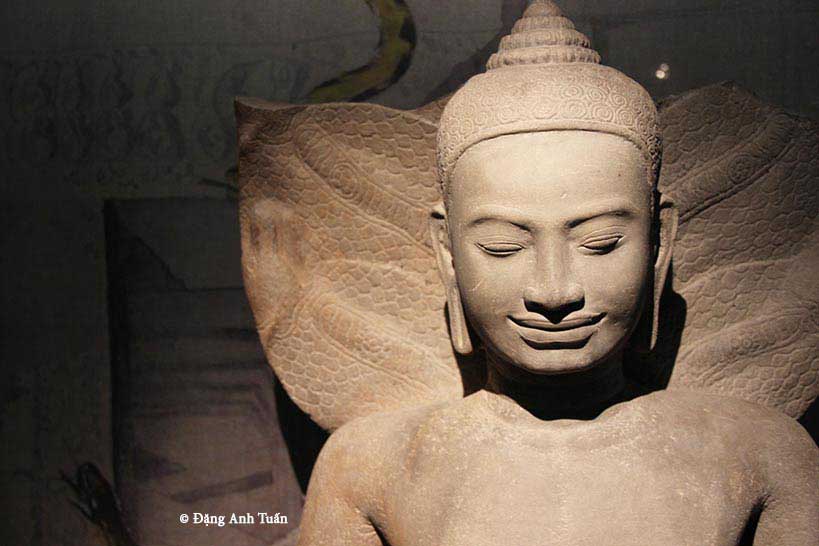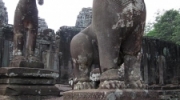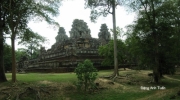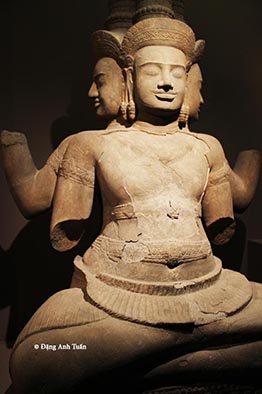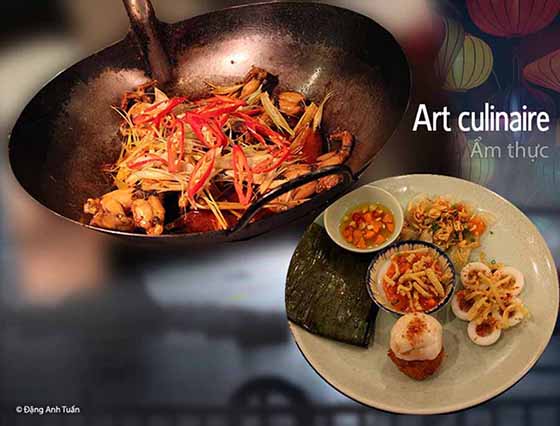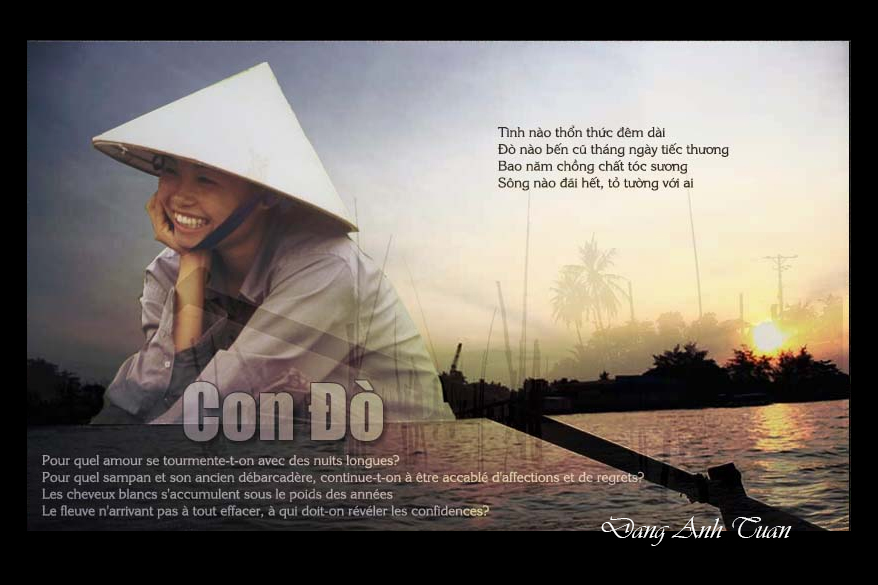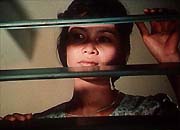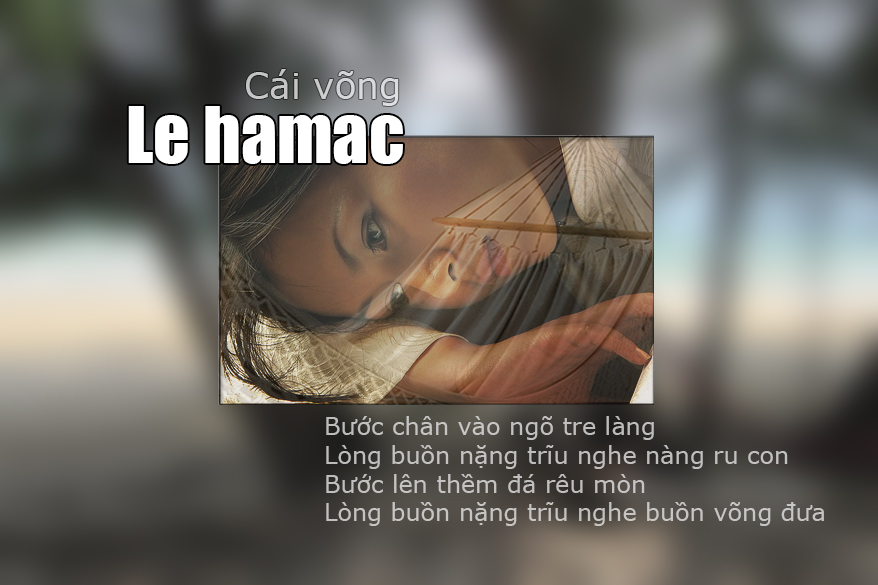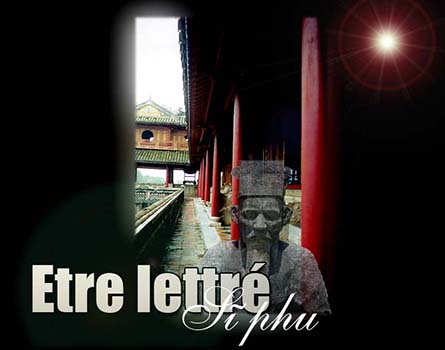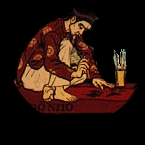Village antique Cừ Đà
Version française
Version anglaise
Galerie des photos
Làng cổ Cừ Đà
Được biết làng cổ Cự Đà qua báo chí nên cũng thừa lúc nhàn rỗi ở Hànội lúc cuối năm 2016, tụi nầy lấy quyết định đi tham quan một lần, biết đâu nó còn nét độc đáo như làng cổ Đường Lâm vã lại nó không xa chi cho mấy Hànôi. Làng nầy nó cách xa thủ đô 20 cây số nếu tính tử trung tâm nhưng đi đến đó chỉ có hai cách mà thội
- -một là đi theo hướng chùa Hương để đến làng Khúc Thủy trước khi đến làng Cự Đà (cách nầy thì đi lòng vòng tốn thì giờ dù đi ô tô)
- còn cách còn lại là tuy ngắn thì giờ (45 phút) nhưng đi qua chợ Hà Đông đến đường Lê Lợi rồi đi thẳng theo đường liên làng qua làng Đa Sĩ. Tới đây phải đi bộ qua cái cầu sắt thì tới đầu làng Cự Đà, ít nhất cũng có hai cây số đi bộ. Tụi nầy không có lựa chọn chi cả vì em tài xế không biết nên chọn cách thứ nhì.
Cũng may trởi tuy u ám nhưng không mưa nhiều nên đi bộ cũng tạm được. Vào làng Cự Đà, cảm giác đầu tiên như thời gian nơi nầy đang dừng lại. Không có tiếng kèn, tiếng xe, tiếng ồn ào của làng xóm như ở Hànôi. Các ngôi nhà nó rất cũ kỹ, có cái 3 gian, có cái 5 gian, vách tường bị hư hõng rất nhiều. Nơi nầy còn thấy những ngôi nhà hai tầng mang phong cách Pháp được xây cất thời Pháp thuộc. Đúng là một làng cổ kính ở vùng Bắc Bộ vì còn tìm thấy được cổng làng, mái đình, chùa, các cây cổ thụ vân vân ….Nghe kể lại có một thời làng nầy rất được sung túc vì nó nằm bên bờ sông Nhuệ, thuyển bè thường đến giao thương dễ dàng . Các doanh nhân ở Hànôi đổ xô về đây, chen đua cất nhà để cuối tuần đựợc an nghĩ. Nay sông Nhuệ màu nước nó đen thối ô nhiểm quá chừng không thua chi kênh Nhiêu Lộc khiến khi đi qua cẩu sắt phải bịt mũi lại. Lòng thấy nặng trĩu, tự hỏi ngưòi dân ở đây sao không bệnh họan được. Âu cũng vì nghèo nàn, vi sinh nhai hằng ngày trong cuộc sống lam lũ với nghề làm miến, làm tương, dân số càng đông khiến làng nầy nó đang xuống cấp trầm trọng trước sự áp lực đô thị hóa.
Từ 500 nhà cổ một thời nay chỉ còn vài chục nhà mà thôi. Dù biết trân trọng cái nét đẹp của làng cổ , người dân ở đây vì thiếu đất , thiếu phương tiện tài chánh để sùng tu nên họ đành bó tay đôi khi còn phá vở trần nhà để có chổ phơi miến, đôi khi xây cất lại theo phong cách hiện nay. Có thể rồi đây chi cần vài năm nửa thôi làng cổ Cự Đà sẻ không còn như ngày hôm nay được tham quan.
En apprenant par les médias vietnamiens l’existence d’un village antique Cự Đà, nous sommes décidés d’aller le visiter lors de notre séjour à Hanội à la fin de l’année 2016. Ce village n’est pas trop loin de la capitale. Il faut compter une vingtaine de kilomètres si on commence à partir du centre de Hanội. Deux voies d’accès sont possibles:
- –soit en prenant la route nationale dans la direction de la pagode des Parfums (Chùa Hương) pour atteindre d’abord le village Khúc Thủy puis celui de Cự Đà.
- –soit en prenant la route traversant le marché Hà Đông dans la direction du village Đa Sĩ. C’est ici qu’il faut entamer la marche à pied (2 kilomètres) par l’emprunt d’un pont ferroviaire réservé uniquement pour les trains et les motos. C’est la voie la plus rapide car on ne perd que 45 minutes en auto. Mais c’est aussi la voie d’accès préférée par le jeune chauffeur de la voiture. Heureusement, en dépit du temps maussade, la pluie n’est pas au rendez-vous, ce qui nous permet de marcher de façon convenable.
En entrant dans ce village, on a l’impression que le temps s’arrête. Contrairement à ce qui est arrivé fréquemment à Hànội, on n’entend aucun klaxon, aucun bruit du moteur ou du village. De vieilles maisons sont rencontrées le long de notre marche. Certaines ont 3 travées, d’autres 5 travées. Leurs murs en brique sont fortement détériorées. C’est ici qu’on trouve aussi des maisons à deux étages construites à l’époque coloniale dans le style franco-vietnamien. C’est vraiment un village antique et typique du Tonkin car on y trouve non seulement son portique mais aussi la toiture imposante de sa maison communale, sa pagode, ses banians centenaires etc…Selon la rumeur, ce village fut florissant à une certaine époque car il est situé au bord du fleuve de nom Nhuệ, ce qui facilite l’échange commercial avec la voie fluviale. Les commerçants plus ou moins aisés de Hànội ne tardaient pas à s’y installer et se rivalisaient à construire des maisons de campagne pour y passer leur fin de semaine. Aujourd’hui, le fleuve Nhuệ est tellement pollué qu’il dégage une odeur nauséabonde et a une coloration noire comme le canal Nhiêu Lộc (Saigon), ce qui nous oblige de nous boucher le nez lors de notre passage sur le pont ferroviaire. Comment les gens peuvent-ils vivre sans être malades? C’est ce profond ressentiment que j’éprouve durant cette visite.
Outre la pauvreté et la dureté de la vie journalière, les gens de ce village ne vivent que de leur métier: fabrication des nouilles transparentes et la sauce de soja.
Etant connu comme un village de métier, Cự Đà continue à perdre son charme antique face à l’urbanisation inquiétante et à la démographie galopante. De 500 vieilles maisons recensées au début du XXème siècle, il n’en reste qu’une vingtaine. Par manque d’espace vital et de moyens financiers dans la rénovation, certains propriétaires sont obligés d’enlever la toiture de leurs maisons pour l’exposition de leurs nouilles au soleil ou de rebâtir leurs maisons dans le style moderne. C’est peut-être dans quelques années à venir que Cự Đà n’a plus d’attraits touristiques qu’il garde encore aujourd’hui lors de notre visite.
Learning from the Vietnamese media about the existence of an ancient village called Cự Đà, we decided to visit it during our stay in Hanoi at the end of 2016. This village is not too far from the capital. It is about twenty kilometers if you start from the center of Hanoi. Two access routes are possible:
– Either by taking the national road in the direction of the Perfume Pagoda (Chùa Hương) to first reach the village of Khúc Thủy and then Cự Đà.
– Or by taking the road passing through the Hà Đông market towards the village of Đa Sĩ. This is where you have to start walking (2 kilometers) by crossing a railway bridge reserved only for trains and motorcycles. This is the fastest route as it only takes 45 minutes by car. But it is also the preferred access route by the young car driver. Fortunately, despite the gloomy weather, there was no rain, which allowed us to walk comfortably.
Upon entering this village, one gets the impression that time stands still. Unlike what often happens in Hanoi, there is no sound of horns, engines, or village noise. Old houses are encountered along our walk. Some have 3 bays, others 5 bays. Their brick walls are heavily deteriorated. It is here that you also find two-story houses built during the colonial era in the Franco-Vietnamese style. It is truly an ancient and typical village of Tonkin because it has not only its gateway but also the imposing roof of its communal house, its pagoda, its century-old banyan trees, etc.
According to rumor, this village was prosperous at one time because it is located on the banks of the river named Nhuệ, which facilitates commercial exchange via the waterway. The more or less wealthy merchants of Hanoi soon settled there and competed to build country houses to spend their weekends. Today, the Nhuệ river is so polluted that it emits a nauseating odor and has a black coloration like the Nhiêu Lộc canal (Saigon), which forces us to hold our noses when crossing the railway bridge. How can people live without getting sick? This is the deep resentment I feel during this visit.
Besides poverty and the harshness of daily life, the people of this village live solely from their trade: making transparent noodles and soy sauce.
Known as a craft village, Cự Đà continues to lose its ancient charm in the face of worrying urbanization and rapid population growth. From 500 old houses recorded at the beginning of the 20th century, only about twenty remain. Due to a lack of living space and financial means for renovation, some owners are forced to remove the roofs of their houses to expose their noodles to the sun or to rebuild their houses in a modern style. It may be in the coming years that Cự Đà will no longer have the tourist attractions it still retains today during our visit.

